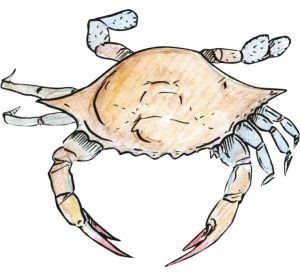But what's the effect of choosing native plants over non-native plants, besides more birds and butterflies? Pest management is a big effect. Native plants support predatory insects, who help keep insect populations in balance--less chance of an outbreak of one species. "My" wrens feed their babies on the caterpillars on the native plants and mosquitos (yea!), making more wrens. Again, helping keep populations in balance.
We humans have a knack for throwing systems out of balance, and we are not good at managing the outcomes. Pest management via native plant ecoscapes means less need for pesticides, all of which have negative impacts from production to use to disposal. And less chemicals running into the Bay. And who is hurt most by polluted water and air? The poor or CEOs? The American yard as an instrument of social justice?
The following article by Mike Ellerbrock covers some water quality issues; what do you think of his last paragraph?
"Ellerbrock is director of the Center for Economic Education at Virginia Tech, a deacon for the Catholic Diocese of Richmond, and member of EPA’s National Environmental Justice Advisory Council.
Water is essential for life. Clean water enhances human quality of life every day in myriad ways.
For most of us fortunate Americans, losing our household water supply for even one day is a major hassle. A precious resource, clean water is no longer an unlimited resource in most regions of the globe.
Water markets offer hope for efficient, affordable and equitable distribution. Water’s scarcity calls for collaborative management and institutional oversight.
In his recent commentary (“EPA runs amok,” June 25), 9th District U.S. Rep. Morgan Griffith claims that the U.S. Environmental Protection Agency “is attempting to supersede the power of state and local governments” to restore water quality in the Chesapeake Bay.
By EPA setting specific pollution discharge limits in the bay watershed for nitrogen, phosphorus and sediments from point and nonpoint sources, Griffith asserts that EPA engages in federal overreach and “micromanagement” of local jurisdictions’ responsibilities under the Clean Water Act.
With all due respect for Griffith, I am afraid that his statements muddy the water regarding the bay’s future. An important distinction lies in the responsibility for setting versus implementing the standards.
More at http://www.roanoke.com/opinion/ellerbrock-muddying-the-bay-s-waters/article_31068dad-ccf7-50de-ad65-32b51c074bce.html?mode=story




